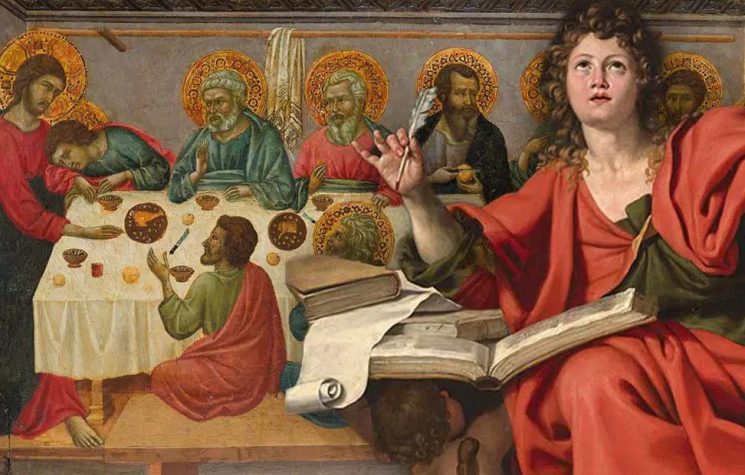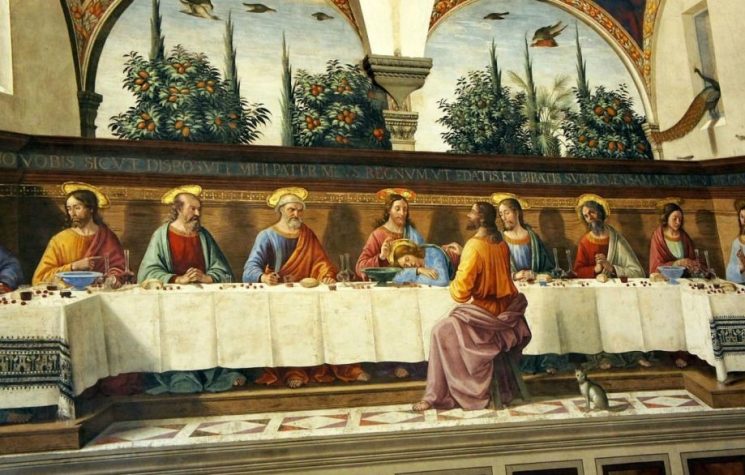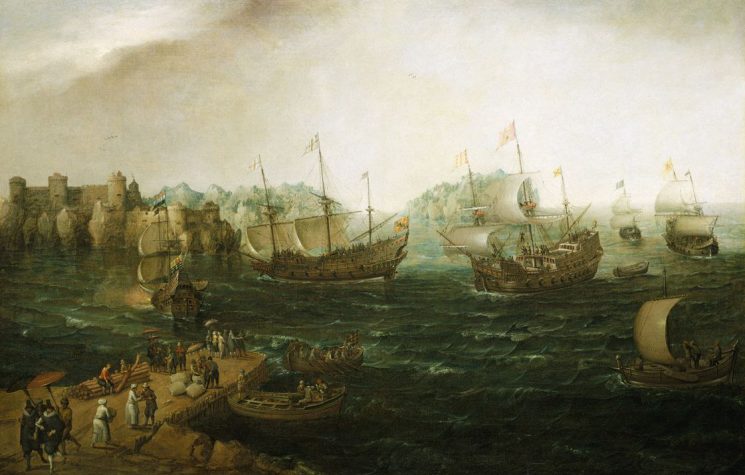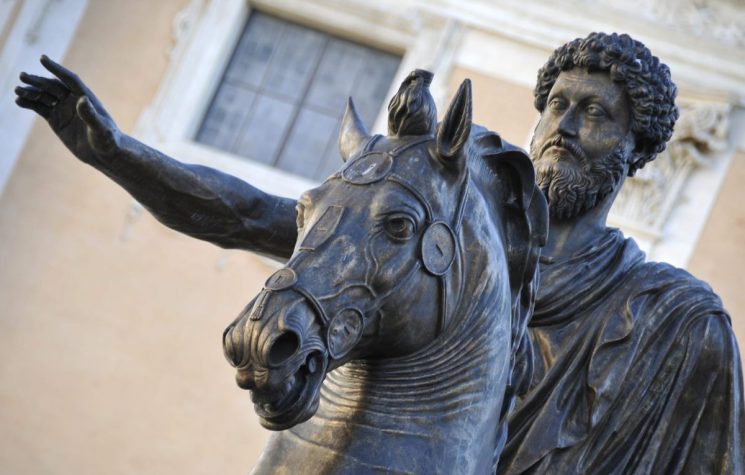Sail away. Be Stoic. The complete antidote to the current insanity.
Contact us: info@strategic-culture.su
If resonant flutes would spring up from olive trees, certainly you would not doubt that olive trees are aware of the Art of the Flute
Zeno of Citium
The object of life is not to be on the side of the majority but to escape finding oneself in the ranks of the insane
Marcus Aurelius
You are sailing in the Gulf of Morbihan (“Little Sea”, in Breton language) in Bretagne, France, NATOstan, occasionally negotiating the second most powerful marine currents in Europe. Water circulates in a giant labyrinth of creeks, rocks and islands. Fishermen and oyster catchers are in heaven.
And then there are the powerful winds. And you start thinking about Plato. You may even picture him, by the sea, watching the wind puffing the sails of a boat. And he thought about pneuma: “vital breath”.
Plato had already had the intuition that the soul is eternal – and in transmigration, incorporates several bodies. Hence the soul may be defined as the idea of vital breath (pneumatos) diffused in every direction. The soul, for Plato, is composed of three parts: rational (logistikon), with its HQ in our head; passional, with its HQ in our heart; and appetitive, in our navel and liver.
And yet this vital breath is not conducted by bodies. And that bring us to the Stoics.
And the whole thing gets much trickier.
Seneca, in his Epistles, writes that the Stoic Cleanthes and his disciple Chrysippus could not agree on walking. Cleanthes said that the Art of Walking was pneuma (spiritum) extending itself from principale (hegemonikon) all the way to our feet. Chrysippus said it was the principale by itself.
In a commentary on a fragment by Cleanthes, British classicist A.C. Pearson – author of The Fragments of Zeno and Cleanthes, published in 1891 – says that Cleanthes was the first man ever to explain the notion of pyr by Heraclitus as pneuma.
Pearson tells us that “the introduction of the pneuma [by Cleanthes] is the truest description of the divine permeating essence, which Zeno had characterized as ether”.
And he also tells us that the Latin term spiritum – used by Tertullian of Carthage – is the translation for the Greek term pneuma.
Tertullian of Carthage – who was at his peak around the year 200 – is a pretty big deal. He is considered the first Western Christian author to write in Latin.
The term “spirit” then, when introduced in medieval Christian theology still in its infancy, essentially carries the lingering notion of Stoic paganism – and not anymore the image of the breath of God coming from ancient Mesopotamian religion.
So, in a sense, the whole of Western civilization is actually indebted to Stoic wisdom.
When a Stoic meets a Hindu
All of the above brings us to an astonishing comparative study of Greek and Hindu philosophy by Thomas McEvilley, The Shape of Ancient Thought.
We are immersed in a vast panorama of several centuries – in which the correlations between Greek and Hindu sages and philosophers are displayed in a natural setting – with Mesopotamia as the original source.
McEvilley writes that “not only the structures of the Stoic and Purana universes and its religious and ethic attitudes” are “very similar”, but the strength that is found in the basis of both spheres, “physical and ethical (pneuma for the Stoics, prana for the Hindus)” is described in a surprisingly close parallelism.
So McEvilley, a specialist in History of Art, Classical Philology and Sanskrit, in fact wrote a 700-page study on the nearly homogenous constitution of wisdom in India, Mesopotamia and Greece, without excluding Egypt and Phoenicia.
He concluded that the ancient civilization of Acadia – the first multi-ethnic empire in History, in Mesopotamia – would have kick-started “the whole meta-narrative of a universe mathematically and astronomically ordained”, which resulted in the logic and scientific revolution promoted by the Greeks.
So we owe a debt to the Stoics as much as we owe it to lost Acadia. And what about extrapolating it all the way to China? Think of Stoic Epictetus, so close to the Tao in his laconic wisdom.
For Zeno of Citium, Ethics depends on a natural exercise of the hegemonikon over desires or emotions: an exercise that is neither trivial nor without effort.
Where the Platonic-Aristotelian finds categories, reason, passions, as irreconcilable differences that must be simultaneously equalized, for the empirical Stoic reason/emotion depends on how the hegemonikon is capable of conducing passions – like conducing one’s legs. And that requires non-stop practice.
“Destiny conduces those of good will”
The great dilemma across the modern West that opposes free will – so eulogized by the bourgeois revolution – to the Law of an Omniscient God, omni-powerful, Mesopotamian, would seem quite pathetic to the Stoics.
They would say there’s no problem in solving the exercizes of human will within a framework of possibilities created by an original Higher God; and the same applies for the lesser gods, local, regional. The result is the enchainment of Destiny. And on this enchainment, the Higher God exercizes His will.
Seneca, in his Epistles, presented us with how Cleanthes approached this tension between human will and divine will with a remarkable sense of humor:
Destiny (or Zeus) conduces those of good will;
Those of bad will, He drags.
(Epistles 107.11)
So we started with the sound of the wind in the Gulf of Morbihan evoking Plato’s pneuma; but the synchronicity had actually started days before in Rio, when prior to one of my recent conferences in Brazil I was presented with a precious essay by Ciro Moroni who essentially revived Pearson’s nearly forgotten 1891 gem.
I read Moroni’s essay on a flight to Salvador, the Brazilian Africa, and in a white fort facing the deep blue South Atlantic sea, silently praised his role as part of the “educated people’ that Western civilization cultivated until the mid-20th century”. This column owes as much to an educated man in Rio as to classicist Pearson and the Stoic posse.
Until recently, across the collective West, Stoics were packaged in a bundle, alongside Epicureans and Skeptics, as if they were mere variations of a quite eclectic period, Hellenism.
These three philosophical strands would look like the equivalent of a cultural response to Platonists and Aristotelians, who would be credited as the foundational currents of Hellenism in Greek philosophical literature in the 6th, 5th and 4th century B.C.
In an essay on the Stoics included in my previous book, Raging Twenties, I noted how the great ascetic Antisthenes was a companion of Socrates – and a precursor of the Stoics.
The first Stoics took their name from the porch – stoa – in the Athenian market where Zeno of Citium used to hang out.
Stoic specificity is a must. The collection of Stoic theses established by its founders was replicated for at least 5 centuries, non-stop, by authors from Athens and Alexandria to Rhodes and Rome – all the way to the Prince of the Romans, Marcus Aurelius, who wrote, in Greek, a devoted dissertation on the Stoic conduct.
Stoic tradition got some bashing by Plutarch because they did not actively participate on public matters and on war.
But then Marcus Aurelius broke the mold – in an epic way. He was one of the five “enlightened” and quite successful emperors of the Antonine dynasty. Marcus Aurelius was an active Prince; a roving leader of this troops in several ops in the Danube; and while camping, he found time to write the legendary Meditations.
Then we have Panecius from Rhodes – who was at the top around 145 B.C. Panecius was quite influential in Rome, and is considered a peripatetic Stoic-Platonic synthesizer, anticipating the way more famous Antiochus, who brought the stoa into the Academy, trying to show that Stoic beliefs featured heavily in Plato.
By the way, the translation of stoa to porticus in Latin gave us “porch” in English and “portico” in Portuguese and Spanish.
The antidote to the current insanity
Today we know there was a massively important movement of scientific, geographic and historical expansion of a new Greco-Roman synthesis from 200 B.C. to the year 200. This period may be easily compared to the Renaissance (roughly 1450-1600).
Stoic themes are absolutely determinant in the Greco-Roman renaissance – even if they were traditionally obscured by Platonic theology or Aristotelian science. They were also neutralized in logic and epistemology by skeptical rhetoric and philosophical pessimism, and underestimated in ethics by Christian religious propaganda.
Well, never underestimate the power of Heraclitus. Zeno and Cleanthes directly used Heraclitus to formulate their theses. Later on, Plotinus would come up with a legendary quote: “Ethereal Fire lies down, transforming itself”.
Jean-Joel Duhot, writing on Epictetus and Stoic wisdom, noted that Stoicism is not materialism: that would only make sense under the Platonic perspective of the rejection of matter.
Anthony Long, an expert in Hellenistic Philosophy, got closer: Stoics are not materialists. They would be better described as vitalists.
The Way, the Stoics tell us, is to own only the essentials, and to travel light. Lao Tzu would approve it. Wealth, status and power are ultimately irrelevant. Once again, Lao Tzu would approve it.
So let’s finish, inevitably, where we began: by the sea, the wind – pneuma – on our sails. And let’s remember the Syrians – in many aspects quintessential Pilgrims of the Sea. Via Syrian colonies, papyrus, spices, ivory and luxury wines spread out all the way to, for instance, Bretagne.
In Naples, Palermo, Carthage, Rome, even the Sea of Azov, Syrians and Greeks have been prime historical pilgrims on an ever-renewed Maritime Silk Road.
Sail away. Be Stoic. The complete antidote to the current insanity.






























